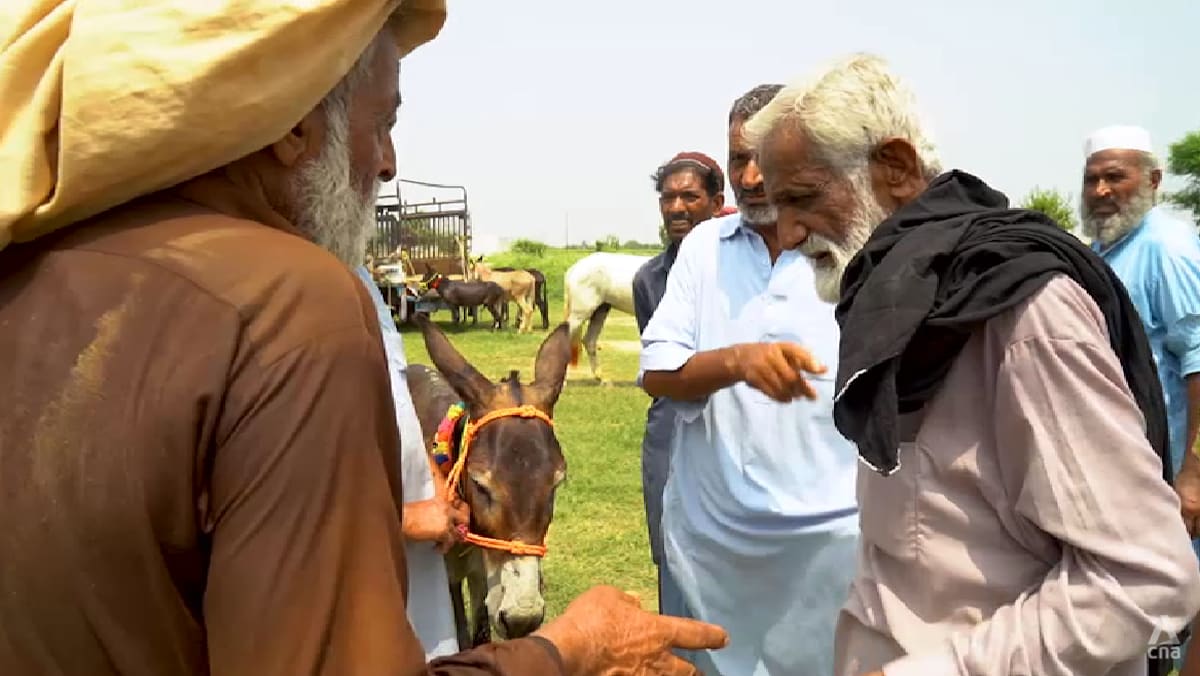SURGING DEMAND
Donkeys have long been the backbone of rural life, transporting goods and ploughing land.
But today, growing demand and soaring prices mean many farmers can no longer afford them.
At a donkey market in Gondal, in Punjab province, farmers gather to trade animals — one of many such markets across the country. Pakistan has the world’s third-largest donkey population, with about 5.7 million animals.
“Previously, it used to cost between 15,000 to 16,000 rupees (US$53 to US$57),” said donkey buyer Farman Ali.
“But now it can sell for as much as 35,000 rupees (US$123). Prices are soaring rapidly every time we come to the market.”
Traders told CNA that demand from Chinese buyers has led to prices more than doubling over the past few months.
“When Chinese people come here, the buying of donkeys increases, which leads to high prices,” said seller Ashraf Gul.
Donkey hides are a prized ingredient in traditional Chinese medicine, food, and cosmetics, making the animals more valuable than ever.
Industry estimates suggest China needs at least 5 million donkey hides each year.
But China — the world’s largest consumer of donkey meat and hides — is facing a sharp decline in its domestic supply.
To fill the gap, it has turned to importing donkeys, with countries such as Pakistan emerging as new sources.
As demand from China grows, officials in Pakistan are rushing to set up donkey farms, hoping the beasts of burden can generate millions in exports to help revive the country’s struggling economy.
But the boom has fed concerns that unregulated donkey meat could slip into local food chains.
Authorities recently raided an unlicensed facility near Islamabad, seizing nearly 1,000kg of donkey meat and rescuing more than 50 animals.
